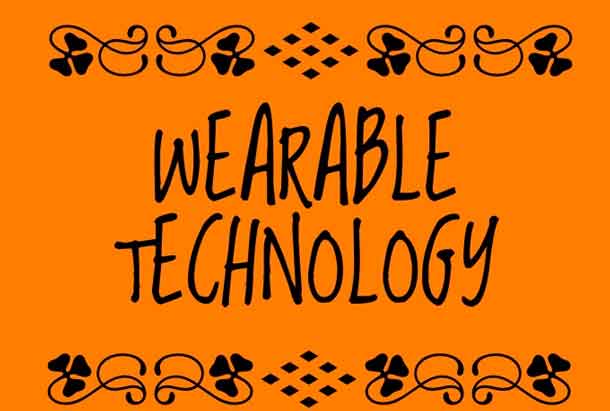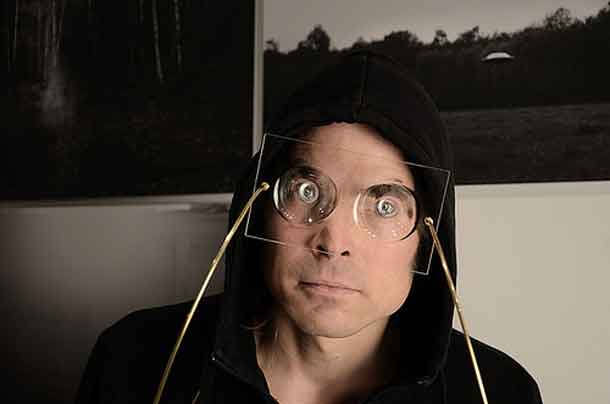
“Buzzword Bingo: Wearable Technology” (CC BY-SA 2.0) by planeta
The story of Canada’s rise to pre-eminence in the field of wearable technology is a narrative driven by a small band of visionaries. It is also a tale that brings together a fertile research environment and a happy confluence of scientific, artistic and commercial plot lines. The pioneering spirit and commitment of Professor Steve Mann and colleagues at the University of Toronto has been fostered and enriched over the past twenty years by the unique combination of circumstances that give Toronto, Ottowa and Waterloo – and Canada in general – its uniquely diverse character.The story of Canadian wearable tech has generated a momentum that continues to go from strength to strength.
Steve Mann has been exploring the potential of wearable technologies for almost 40 years. His Eye Tap Digital Eye Glass has evolved considerably since his early prototypes in the 1980s, but not for nothing is Mann routinely to as the Father of Wearable Technology.
From inspiration to commercialization
Already in 2016, we are losing sight of the roots of this story and turning our attentions to the usable potentials that wearable tech can deliver. Commercial applications such as the equally successful Canadian gaming industry have been quick to see the potential in wearable devices. As London’s Future of Play Forum discussed in 2015, the marriage between novelty for its own sake and forms of gaming – of which casino gaming offers one immediately commercial potential – is a natural fit.
The development by gaming giant Microgaming in 2015 of a fully funcitonal five reel slot game for the Samsung Gear smartwatch points to the practical steps being taken to take that gaming/hi tech marriage to market. The ideal is to be able to play Microgaming products at 32Red Slots or Betway on your wristwatch whilst waiting for a train, or between appointments. The ultimate convenience of wearable tech makes it the perfect medium for such undemanding, pick-up-and-put-down entertainments: Short and sweet games of slots, poker or roulette are made seamlessly available 24/7 and always within reach.
And whilst the practical utility of smart watches – Mann developed his first in 1998 – is one energizing factor in the push towards wearability, Toronto’s creative fashion industry and its vibrant entrepreneurial culture have been no less significant. After all, no-one wants a smartphone that looks lousy.

“Wearables Tech” (CC BY-SA 2.0) by theglobalpanorama
A shared interdisciplinary vision
As Professor Kate Hardman, assistant professor in the Digital Futures Program at the Ontario College of Arts and Design, told the Globe and Mail last year, the fact that Mann was able to share his vision with collaborators who were already part of the established fashion and textile culture on his doorstep allowed for the synthesis between what was technologically viable and what might be stylishly wearable.
The buzz that keeps building
Inevitably such events only serve to heighten the buzz around the Canadian wearable tech phenomenon. And that buzz, in turn is generating serious business revenues. Market forecasters IDC Canada forecast in 2014 that by 2018 the global market for wearable tech would see what they called ‘hockey stick growth’. A similar report by Juniper Research put numbers to that image: $19 billion up from $1.4 billion in the space of the five years leading up to 2018.
With that sort of growth in prospect it is easy to see why tech developers and start-ups are so keen to get to Toronto. And in turn that influx of free thinkers is seeing the potential of wearable tech being explored in areas as diverse as medicine, dentistry and meditation as well as the more recreational uses exemplified by the likes of 32Red, Betway and Microgaming.
A collaborative culture
Underpinning the Canadian surge in wearable tech is something that is remarkably un-technological, but which is no less significant for that. The collaborative ethos that allows diverse groups of researchers and entrepreneurs to pool their insights and to work together is not something that we should take for granted. Whether you put it down to something distinctively Canadian or, as Forbes correspondent Andrew Reid suggested in May 2015, simply a matter of the Blackberry downswing – is a moot point. But as bridge-building organizations such as wearewearables.com demonstrate, a willingness to cross boundaries and to work together speculatively are significant elements in the ongoing story of Canada’s wearable tech success.

